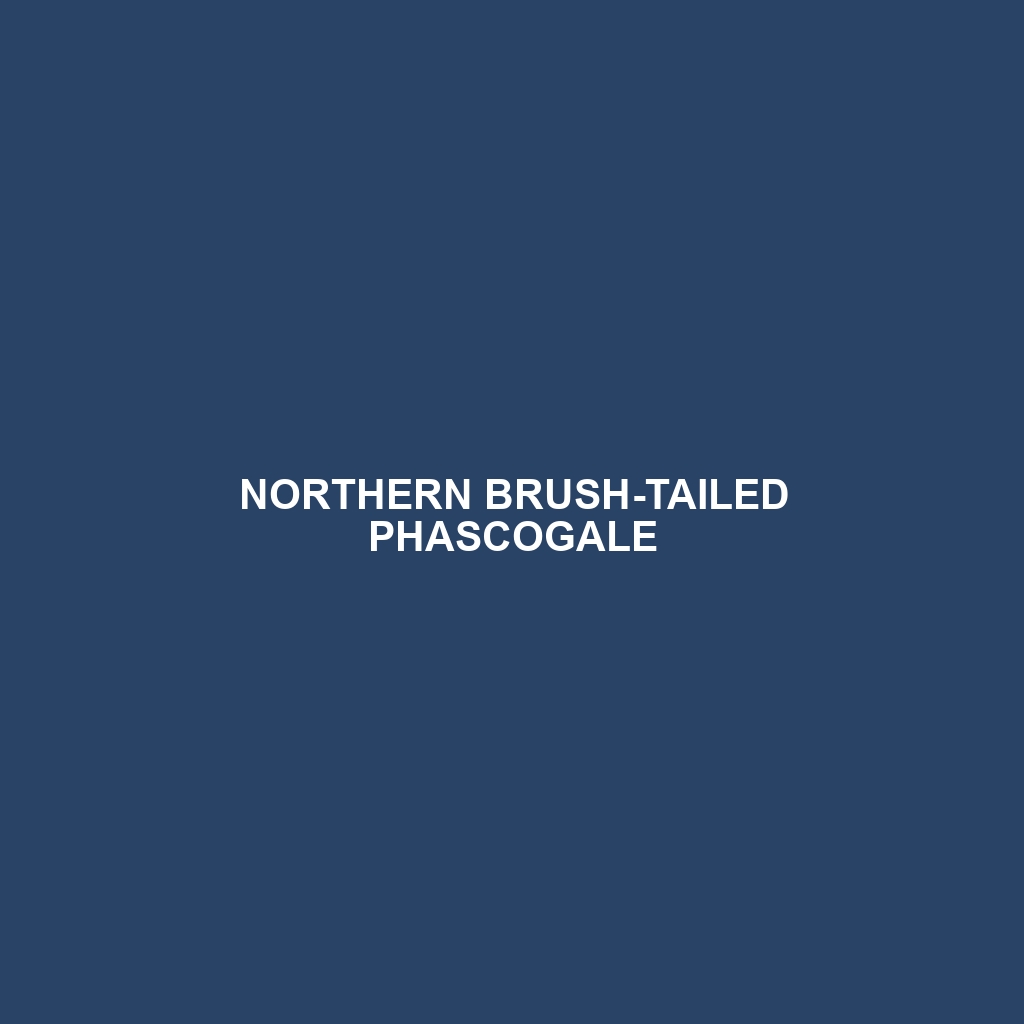Northern Brush-tailed Phascogale: A Comprehensive Overview
The Northern Brush-tailed Phascogale (Phascogale pirata) is a small, nocturnal marsupial native to northern Australia. Known for its distinctive brush-like tail, this agile and secretive mammal navigates the forest canopy with ease. As an insectivorous and carnivorous species, it plays a crucial role in controlling insect populations and maintaining ecological balance in its habitat.
Physical Characteristics:
Size:
Northern Brush-tailed Phascogales are small marsupials, with adults typically measuring between 16 to 23 centimeters (6.3 to 9 inches) in body length, excluding the tail. Their bushy tails add another 16 to 20 centimeters (6.3 to 7.9 inches) to their overall length.
Coloration:
Their fur is generally a soft gray to brownish-gray on the upper body, with a lighter, whitish underbelly. The most striking feature is their tail, which has a dense brush of black fur that fans out, giving it a bottle-brush appearance.
Special Features:
The Northern Brush-tailed Phascogale possesses sharp claws and a prehensile tail, which aid in climbing and maneuvering through trees. Their large, black eyes provide excellent night vision, essential for their nocturnal lifestyle.
Behaviors:
Social Interactions:
These animals are largely solitary, coming together only during the breeding season. Males tend to roam over larger territories, while females have more defined home ranges.
Feeding Habits:
Phascogales are primarily insectivorous, feeding on a variety of insects and spiders. However, they are also known to consume small vertebrates such as birds, reptiles, and even other small mammals. They are adept hunters, using their keen senses to locate prey in the dark.
Ecological Roles:
As predators of insects and small animals, Northern Brush-tailed Phascogales help control insect populations and contribute to the overall health of their ecosystem. By preying on various species, they maintain a balance that prevents any one species from becoming overly dominant.
Habitats:
Preferred Environment:
These marsupials are typically found in open forests, woodlands, and dense shrublands. They prefer habitats with plenty of tree cover, which provides shelter and abundant food sources.
Geographical Range:
The Northern Brush-tailed Phascogale is endemic to northern Australia, with its range extending through parts of the Northern Territory and the northern regions of Western Australia and Queensland.
Adaptations:
Climbing Abilities:
Their sharp claws and prehensile tails make them highly adept climbers, allowing them to navigate the forest canopy with agility and speed.
Nocturnal Lifestyle:
Adapted to a nocturnal lifestyle, their large eyes offer superior night vision, and their acute sense of hearing helps them detect prey and avoid predators in the dark.
Diverse Diet:
Their opportunistic feeding habits allow them to thrive on a varied diet, making them adaptable to changes in food availability.
Conservation Status:
Current Status:
The Northern Brush-tailed Phascogale is currently listed as Vulnerable by the IUCN Red List of Threatened Species. This status is due to habitat loss, predation by introduced species such as cats and foxes, and competition for food and shelter.
Conservation Efforts:
Efforts to conserve this species include habitat protection and restoration, as well as control of invasive predators. Research and monitoring programs are also in place to better understand their population dynamics and ecological needs.
Fascinating Fun Facts:
Short Lifespan:
Males have a notably short lifespan, often dying shortly after the breeding season due to the stresses of mating competition and the demands of supporting their high metabolic rates.
Elusive Nature:
Due to their nocturnal and arboreal habits, Northern Brush-tailed Phascogales are rarely seen by humans, making them one of the more mysterious marsupials of Australia.
Unique Reproduction:
Females have a pouch in which they carry their young until they are developed enough to be left in a nest while the mother forages.
By highlighting the unique attributes and ecological significance of the Northern Brush-tailed Phascogale, your website can help raise awareness and support for the conservation of this remarkable species.
